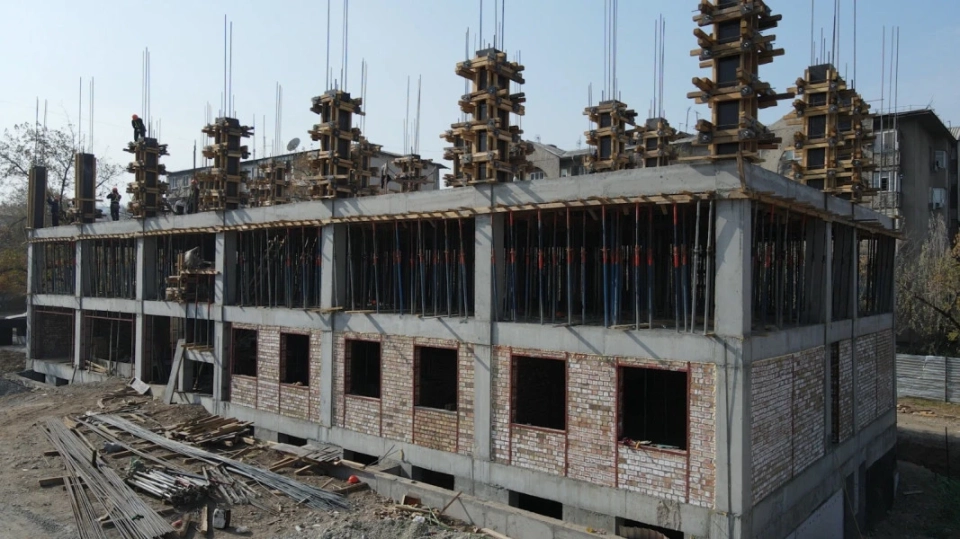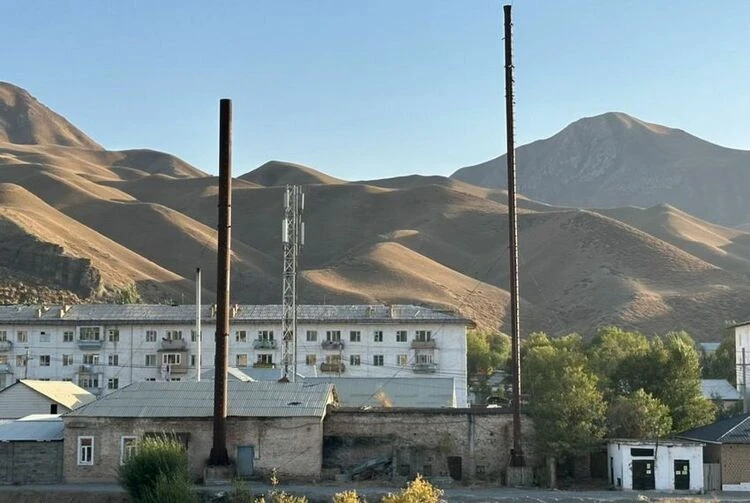In Karakol, located in the Issyk-Kul region, on Alyshebaeva Street (formerly known as Lenin), there...
In Karakol, located in the Issyk-Kul region, there is a building that was erected over a hundred...
In Karakol, located in the Issyk-Kul region, at 143 Alyshbaeva Street (formerly known as Lenin...
On Alabakova Street, house number 155 (165) in Karakol, located in the Issyk-Kul region, a...
In Karakol, located in the Issyk-Kul region, there is a historic building that has turned 120 years...
In the Issyk-Kul region, in the city of Karakol, there is an ancient building of the pedagogical...
On Gorky Street (Zhusayev) in the city of Karakol, Issyk-Kul region, there is an old house,...
In the Batken region, in the city of Aydarken in the Kadamjai district, there is a historical site...
In the Issyk-Kul region, in the city of Karakol, there is a significant Dungan mosque. The building...

Growth of the City in the Early 20th Century Little expanding in the pre-war years due to its...
A road incident in Karakol involving a "Lexus" and a "BMW" occurred on October...
In Karakol, located in the Issyk-Kul region, there has been an increase in prices for beef, lamb,...
In Karakol, on Masaliev Street, formerly known as Fuchik, there is a racetrack covering 44...
Relatives of the famous statesman Turdakun Usubaliev[b] expressed their opinion on the...

ZENKOV Andrei Pavlovich...
Recently, the opening of the updated water supply system took place in the residential area...
In Karakol, the heating season will begin on November 3, as reported by the municipal enterprise...
At the initiative of the President of the Kyrgyz Republic, Sadyr Japarov, the reconstruction of the...
According to the information from the mayor's office, Zhyldyzbek Bolotbekov has become the new...
The press service of the city administration of Osh announced plans to widen the central street and...

City in Honor of N.M. Przhevalsky Starting from 1875, the growth rate of the city significantly...

The Green Southern City The streets of the old city of Osh developed spontaneously. The...
On October 26, 2025, Kyrgyzstan held a Day of Remembrance for the servicemen who lost their lives...

The second half of the 19th century and the beginning of the 20th century marked an era of...
In Osh, along S. Supanaliev Street, the process of demolishing a two-story residential building...
The secret cave is located in the village of Kök-Moynok, not far from the city of Balıkçı in the...
At the House of Culture named after S. Andabekov, located in the At-Bashy district of the Naryn...

Birthday of Karakol (Przhevalsk) - July 1, 1869 History has preserved for us the exact date,...
At the intersection of Abdrahmanov and Toktogul streets in Karakol, a traffic accident occurred...

IN HONOR OF THE HERO CITY OF MOSCOW This is one of the busiest streets in the city. Stretching...

Construction of a new building for the Youth Technicians Station is actively underway in Bishkek,...
In the village of Novovoznesenovka, located in the Ak-Su district of the Issyk-Kul region, funding...
The construction of a new two-story building for the district electric networks enterprise is...
On October 27, 2025, President Sadyr Japarov announced the start of construction of mortgage houses...
In Osh, the expansion of Alisher Navoi Street is planned, covering the section from Alymbek Datka...
- Sadyr Japarov opened the new building of the National Bank of the Kyrgyz Republic on October 28....
On Frunze Street in the town of Orlovka, Kemin District, Chui Region, work has begun on laying new...

The houses-manors are characterized by their close proximity to each other. Sometimes they adjoin...

In Karakol, the regional drama theater named after K. Djantoshev is closing its 31st theater...
On November 1, President Sadyr Japarov visited kindergarten No. 11 in Karakol during his working...

Photo GKNB. Heating plant in Naryn According to the press center of the GKNB, the heating plant...

THIS IS WHERE THE CITY OF PISHPEK BEGAN Tashkent tract... Tashkent street..., then Lenin Avenue......

During the period in question, Kyrgyzstan was unable to conduct any foreign policy. However,...
In the Osh National Historical and Archaeological Museum Complex "Sulaiman-Too," archival...

Mountains and Glaciers The abundance of landscape resources or interesting geological features...